Squalomorphi
These all lack an anal fin...except for Hexanchiformes.
Hexanchiformes: Six-Gill Sharks
Almost all sharks have five gill slits, but there's always someone who has to be different. This order contains sharks with six or seven gill slits.
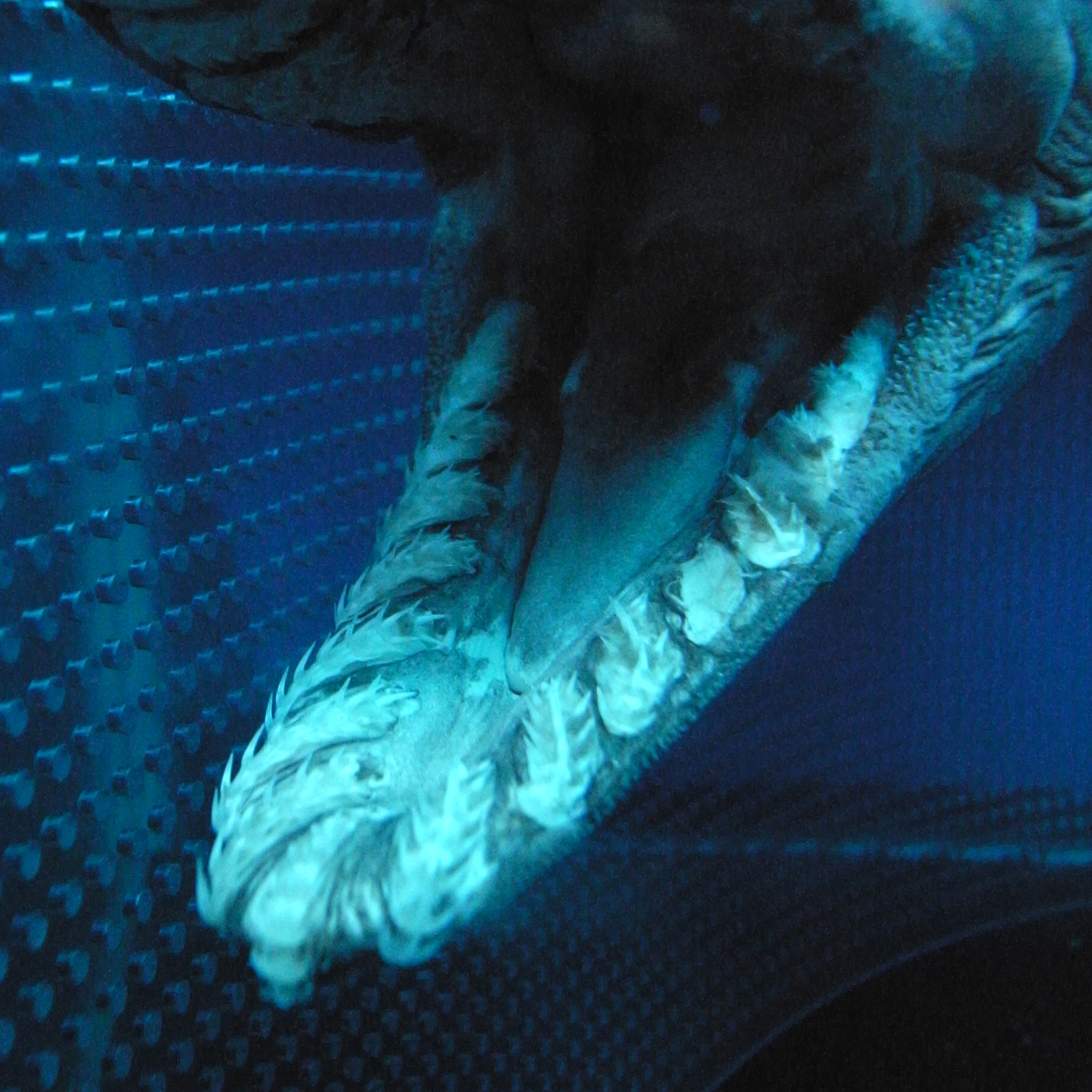
"Chlamydoselachus anguineus (mouth and teeth) by OpenCage". Licensed under Creative Commons Attribution-Share Alike 2.5 via Wikimedia Commons
Chlamydoselachidae: Frilled Sharks
There is only one genus (Chlamydoselachus) with two species. The body is elongated like an eel, and all of its fins except the pectorals are placed near the rear of the body. The frilled shark gets its name from the frilled/fringed appearance of its gill slits, due to elongated gill filaments. The six gill slits converge underneath, and the first gill slits connect to each other. Its mouth is at the front of the body, and gives the shark a strange look, almost as if it was a sock puppet on somebody's hand. The teeth are unique, in that they have three needle-like cusps. This shark is found in deep waters, but footage of a dying individual has been recorded.
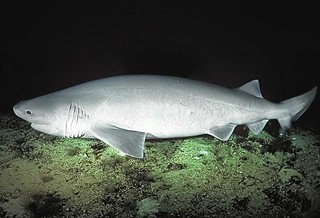
Hexanchidae: Cow Sharks
The members of this family have either six or seven gill slits, and only one dorsal fin. They are considered to be similar to primitive sharks, due to a similarity in the skeletal, digestive, and excretory systems. There are three genera:
- Heptranchias perlo: The sharpnose sevengill shark has seven gill slits, a pointed snout and its eyes glow green while alive
- Hexanchus: The two species in this genus have six gills, and are frequent bottom scavengers
- Notorynchus cepedianus: The broadnose sevengill shark is different than its relative Heptranchias, in that it has a rounded snout
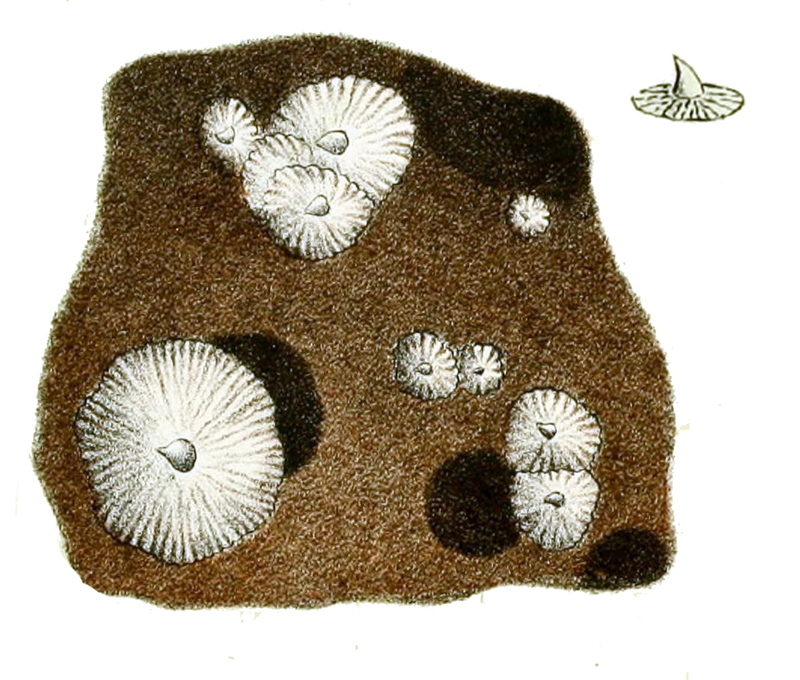
"Echinorhinus brucus denticle" by Arthur Bartholemew - Natural history of Victoria F. McCoy. Licensed under Public domain via Wikimedia Commons
Echinorhiniformes: Bramble Sharks
There is only one family (Echinorhinidae) and one genus (Echinorhinus). Both the prickly and bramble sharks get their names from the distinctive dermal denticles, which form little patchs all over their bodies. These denticles can become fused in the bramble shark, but not the prickly shark.
Squaliformes: Dogfish Sharks
There do not seem to be many features joining this order, but each of the families has its own interesting characteristics.

Squalidae: Dogfish Sharks
This family has spines on their dorsal fins, which contain a venom that is toxic to humans. The most well-known and well-studied member of this family is the Spiny Dogfish, Squalus acanthias. They are one of the most abundant shark species in the world, and are frequently used for both consumption and shark research.
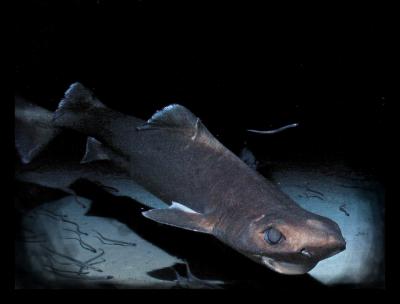
Centrophoridae: Gulper Sharks
The genus Deania is characterized by an extremely elongated, pointed snout. Many of the sharks in this family are called gulper sharks for some unknown reason.
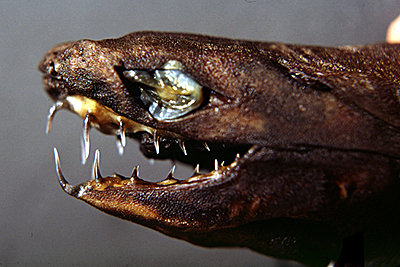
"Trigonognathus kabeyai head 2" by Stephen M Kajiura - Sent by e-mail. Licensed under Creative Commons Attribution-Share Alike 3.0 via Wikimedia Commons
Etmopteridae: Lantern Sharks
This family receives its name from the photophores found along their bodies. The smallest shark, Etmopterus perryi, is found in this family. A species who deserves special recognition is the ultra-creepy Viper Dogfish, Trigonognathus kabeyai. Many sharks can be described as scary, but this one is something out of a nightmare. Its fang-like teeth are used for impaling prey, which can be larger than the shark itself.
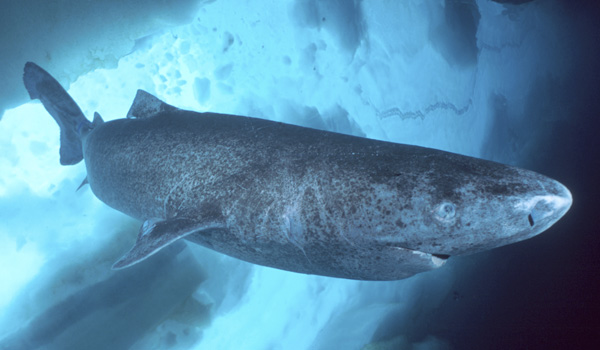
Somniosidae: Sleeper Sharks
There are numerous sharks in this family, but I am going to focus on my personal favorite, the Greenland Shark (Somniosus microcephalus). This shark is found farther north than any other species, and rivals the Great White in size! This shark employs a rolling motion of its jaws to bite chunks from its prey, anchoring with its upper jaw and cutting with the lower one. Greenland sharks are thought to be some of the oldest living vertebrates on the planet. They are slow moving, and are thought to either ambush the seals underwater or scavenge dead animals. The flesh contains high levels of TMAO (trimethylamine oxide), which is toxic to humans. It is eaten anyway, by fermenting underground for months, producing a food called Hákarl. This is supposedly one of the most horrid foods you could ever eat...gross.
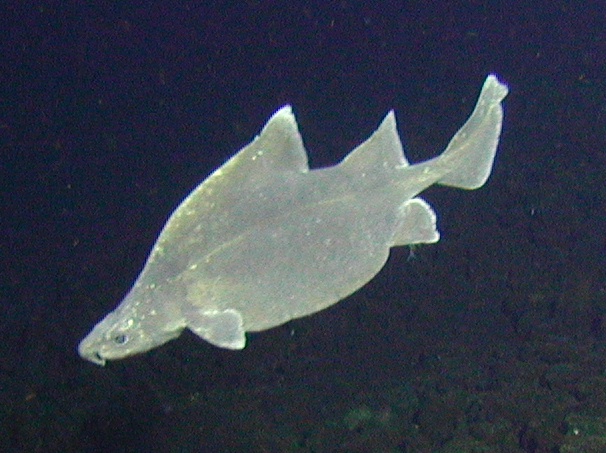
"Oxynotus bruniensis" by New Zealand-American Submarine Ring of Fire 2005 Exploration, NOAA Vents Program. Licensed under Public domain via Wikimedia Commons
Oxynotidae: Rough Sharks
This family has only one genus, Oxynotus. They are characterized by a triangular body shape and an extremely large dorsal fin containing a spine (imagine the relative size of a sailboat's sail compared to the boat itself). These sharks have large scales, giving them a rough feel and an appropriate name.

Dalatiidae: Kitefin Sharks
This family is characterized by a cigar-shaped body and a rounded snout. The most famous genus within is Isistius, the Cookiecutter sharks. Known to some as the "scary tricky sharks," these sharks have evolved to have a fused row of teeth in their lower jaw, which grows and falls out in unison. This is used for their unique and super awesome feeding strategy. The cookiecutter shark attacks much larger prey, such as tuna or whales, and bites into its flesh. Using its modified lower teeth, it bites a chunk out of the flesh, then swims away. It also feeds on smaller prey and squid actually make up the majority of its diet. This shark has photophores on its belly, in order to blend in with the starlight from above at night. However, there is a "collar" where there are no photophores. It is thought that from below, this looks like a much smaller fish. This will cause larger fish to attack, and the cookiecutter shark is actually able to use the would-be predator's momentum to its advantage, easily biting out a chunk with a minimum expenditure of energy. Now that's awesome. These sharks have also been known to attack non-living prey, such as submarines and undersea cables!
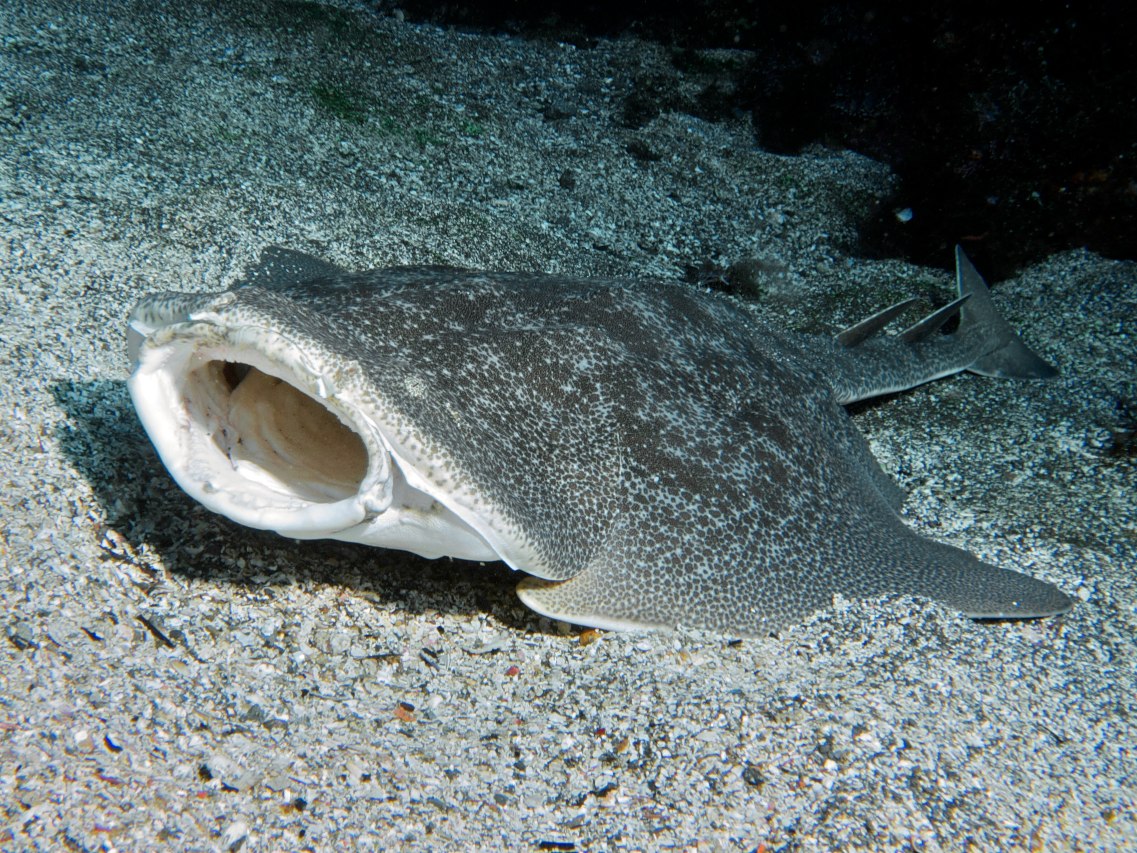
Squatiniformes: Angel Sharks
There is one family (Squatinidae) and one genus (Squatina). These sharks are distinguished by having an extremely flattened body. Although it could first be mistaken for a ray, its identity is clear by the separation between the head and pectoral fins, which would be attached in a ray. Also, the mouth is terminal instead of ventral, the gill slits are dorsal instead of ventral, and the dorsal fins are clearly present towards the tail end. These sharks are also different than the other families in that the lower lobe of the caudal fin is longer than the upper lobe. Exciting, I know. But it could be on the test!
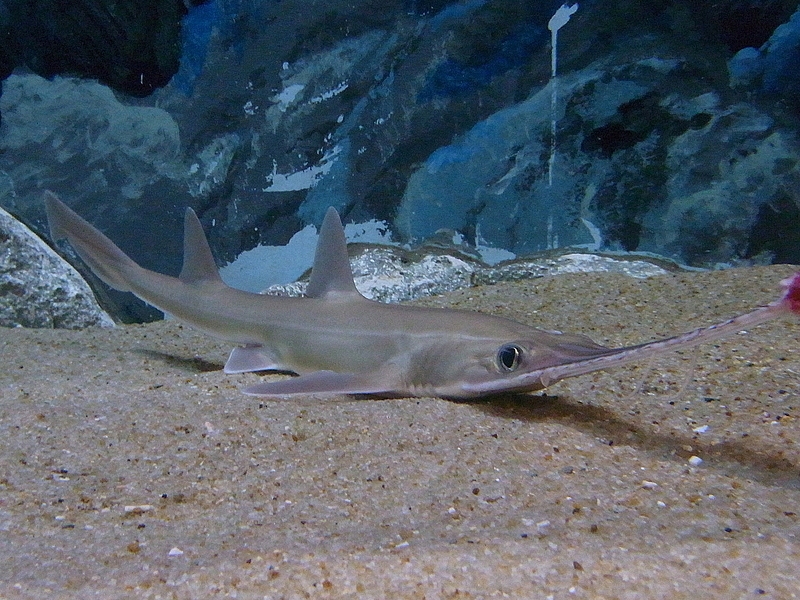
Pristiophoriformes: Saw Sharks
This order contains one family (Pristiophoridae) and two genera. This group is easily recognized by its flattened, elongated rostrum (nose) with enlarged teeth on either side. The sawshark also has barbels halfway along its rostrum. The gill slits are on the sides of the body, and the sawshark teeth alternate between sides of the rostrum. The Sixgill Sawshark, Pliotrema warreni is notable for having six gill slits. The sawshark should not be confused with the sawfish (Pristidae), which is a type of ray.